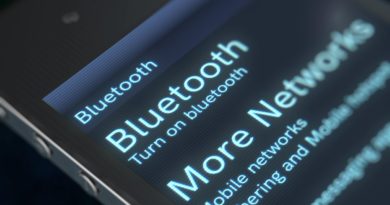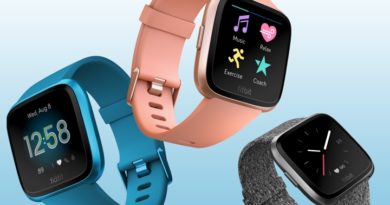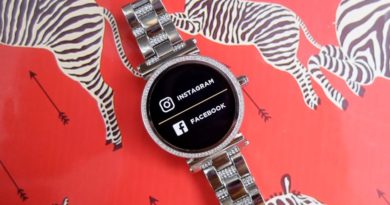Wear OS on iPhone guide: what you can and can’t do
Wear OS by Google lets iPhone users pair a Wear watch and get an experience almost as good as those treading the pure Android smartphone-pairing path.
Of course, those of you who previously ran an older version of the software will know that most Wear watches already worked with iOS, but the experience was very limited.
Since Wear 2.0 landed in February 2017, though, many more features have been rolled in, and although Android smartphone users will still have a few exclusive extras, it’s definitely much better now for the iPhone. So much so that in 2018 Google renamed Android Wear to Wear OS, a way of better communicating that iPhone users can use these watches too.
So, if you’ve thought about avoiding the Apple Watch and instead buying a Skagen Falster 3 or Michael Kors Lexington 2 – or like the look of a Fossil Gen 5 – but are tied to Apple’s mobile operating system, Wear OS brings you closer than ever to getting the best of both worlds.
Explore below to find out what you can and can’t do with Wear on your iPhone, as well as what devices are compatible. We’ll also walk you through the setup.
Wear OS on iOS: Which devices work?First thing first: you need an iPhone 5 or later with at least iOS 9 installed in order to use your Apple phone with a Wear watch.
Second, obviously, you need a Wear watch that works with iOS. Over time, Google has expanded compatibility out to just about every model, and even some of the oldest ones that didn’t ‘officially’ get support have still worked when we tried.
Also, every watch that got the Android Wear Oreo update also got the Wear OS update, so unless you’re using a much older device, you should already have all the new branding. If you didn’t get the full rebranding, fear not, as you’ll still be able to pair with iOS.
Wear OS on iOS: Initial setupPairing your Wear watch with an iPhone is a fairly straightforward procedure, but if your device is already linked to a different phone, remember to give it a factory reset first. To do this, head into System and hit Disconnect & Reset.Once you’re ready, first download the Wear OS by Google app on your iPhone from the App Store. Then simply fire up the smartwatch and select the button to pair a new Wear device.
You’ll need to select your watch from the list in the iOS app and verify the connection on both devices. To set up a new watch in the app, hit the menu button on the left side of the home screen and hit ‘Set up a new watch’. Once that’s done, the app will update the watch’s software to the latest version and ask you to select the Google account you want to copy over.
After a minute or so of preparation, your watch should start running, presenting you with a Wear tutorial that walks you through the basics of notifications and using Google Assistant. It’s short and definitely worth paying attention to.
Wear OS on iOS: What it doesWear OS now lets iOS users do a lot more, and in time, with updates and more third-party apps, the experience will get even better. Probably the biggest change for iOS users since Wear 2.0 was introduced is the fact that it puts a Google Play Store on the watch itself. This is actually huge for iOS, as it lets you run all the same standalone apps you would with an Android phone. You’ll be able to load up the store on the watch, browse and download apps just as people paired with an Android smartphone can.
Read this: Google talks about the future of Wear OSGoogle Assistant is also built into Wear as a standalone app, which means iOS users are able to use this on the watch (just don’t make Siri jealous). With the Assistant and Play Store on the watch, it’s a good idea to get it connected to Wi-Fi during setup, especially if you need to download some software updates.
But maybe the biggest surprise is that Google Pay (previously Android Pay) also works for iOS, giving iPhone users an alternative wearable payment option to Apple Pay. How far we’ve come.
When it comes to notifications, the experience is also pretty good with texts, emails, calendar reminders – plus all third-party apps too, whether it’s WhatsApp, Twitter, Instagram or Snapchat. And when you dismiss them on the watch, they’ll disappear from your iPhone notification screen, so the two really are working in unison.
Watches like the ZTE Quartz come with LTE and a built in speaker/mic, meaning you can make and take calls on them. Carriers such AT&T, Sprint and T-Mobile let you share your number across both devices (which makes more sense than having a separate one just for your smartphone, unless you’re actually Dick Tracy). This also works on iOS, handily.
Music controls work with Apple Music and third-party apps like Spotify, too, and you even get album artwork on your wrist now.
Your Wear device will count your steps and provide the basic activity metrics of the new Google Fit while you’re paired with iOS. It’s not transferred across to Apple Health, sadly, but then we’d be surprised if Apple were so generous as to open that gate.
Wear OS on iOS: What it doesn’t doThere are still some limitations in using iOS with Wear OS. For example, iMessages won’t come through, as these are only supported on iOS. Integration with the calendar and emails is also a bit more limited. You also can’t reply to messages from third party apps like WhatsApp unless you’re using an Android phone.
When we tried asking the Assistant to mark reminders in the diary we were simply directed to the phone, while doing this when paired with an Android phone meant Assistant actually scheduled it for us.
Read next: Apple Watch v Wear OSHowever, you can switch on rich Gmail cards, which allow you to archive and reply to Gmail messages directly from the wrist, including with voice. In fact, when you link your Google account during setup it also links your Gmail account. This means Gmail messages come straight from a built-in app rather than any smartphone app you may usually use on the iPhone.
Wear OS on iOS: The iPhone appWhen Google rebranded Android Wear as Wear OS it came with a new app on both Android and iOS.
And while you do have more options through the Wear app, there’s still not a whole lot going on here. The home screen will show you your paired devices and prompts to download updates, should there be any available. Tap the menu icon at the top left and you’ll be met with a button to set up a new watch.
There are also some settings below where you can tweak notifications, Google Assistant and the calendar. That last one is important, as you can choose whether you want your email and calendar updates to come from your Google or Apple account. Just make sure you’ve set it to the one you normally use. No Play Store link – you have to go directly to that on the watch or install via the browser.
Aside from that, there’s not an awful lot else to see, especially as Wear now handles a lot on the watch itself. You can change a couple of screen configurations, and there’s the settings option for Google Assistant that allows you to manage smart home control and set a whole host of Assistant prompts, including setting alarms, playing music and asking Google questions.
Really, beyond the initial setup, you’re probably not going to be coming back in here too often, but that’s fine. Wear is still limited in some ways, but iOS users who plump for a Google-based wearables are now getting a much more feature-rich experience.
Got any questions about using Wear OS on an iPhone? Let us know in the comments section below.


